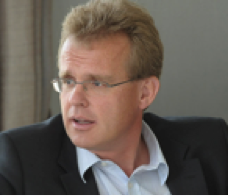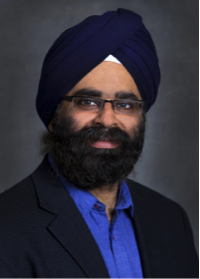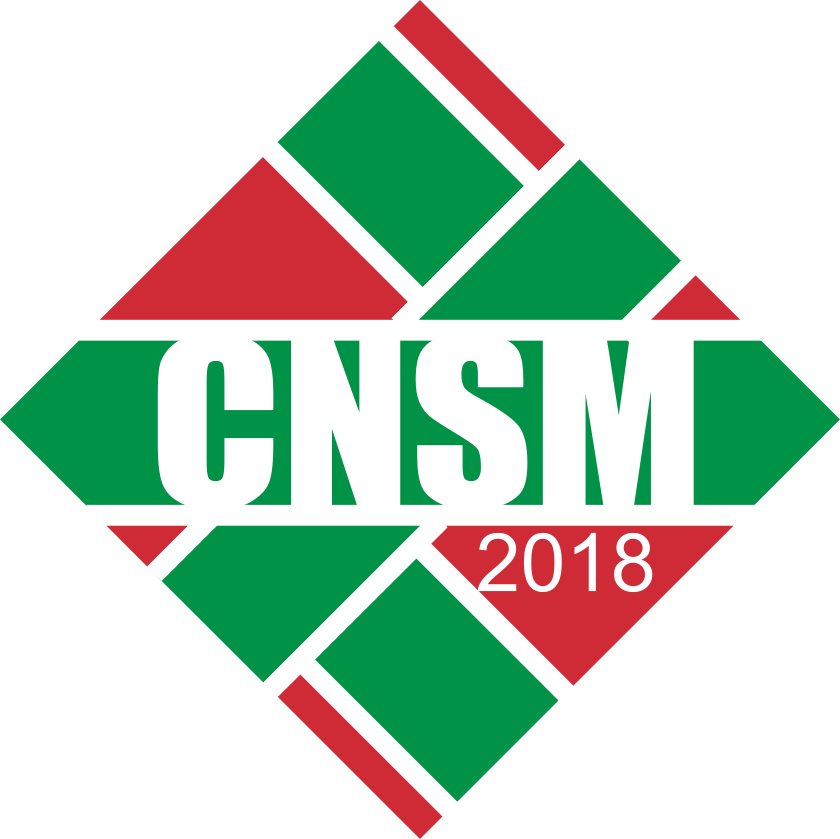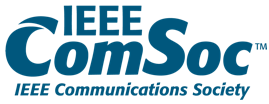CNSM 2018 Keynote Talks
Keynote Session 1
Title: Segment Routing: Solution, Use-case, Deployment and research opportunity
Speaker: Clarence Filsfils, CISCO
Date: November 6th, 2018, 9:00 - 9:45 AM

Bio: Clarence Filsfils, a Cisco Systems Fellow, has a 20-year expertise leading innovation, productization, marketing and deployment for Cisco Systems. Trusted and respected by key decision makers across major WEB/OTT, SP’s and large Enterprises, Clarence enjoys working with these operators to listen to their needs and requirements, and then get things done from product design to deployment. He invented the Segment Routing Technology (over 40 patents) and is leading its productization, marketing and deployment at record execution speed. For this contribution, he and his team received the Pioneer Award - Cisco's most prestigious award honoring innovative engineering. The award celebrates engineering contribution that brings growth in new markets, redefines current markets, and provides game-changing improvements to engineering productivity. Previously, Clarence invented and led the Fast Routing Convergence Technology (over 30 patents) and was the lead designer for Cisco System’s QoS (20 patents) and large-scale IP/MPLS deployments. Clarence is a regular speaker at leading industry conferences. He holds over 140 patents and is a prolific writer, either in academic circle (Sigcomm 2015), or standard (8 RFC’s, 20 drafts on standard’s track) or books. Clarence holds a Masters in Management from Solvay Business School and a Masters of Engineering in Computer Science from the University of Liege.
Abstract: Segment Routing (SR) is a modern variant of source routing, which is being developed within the SPRING and IPv6 working groups of the IETF. Segment Routing gives the possibility to include a list of instructions (called segments) in the packet headers. This list of segments influences the forwarding path of the packets and can also provide instructions to be performed on a packet in a given node. End-to-end policies can be realized without creating any per-flow state in the network. The Segment Routing architecture seeks the right balance between distributed intelligence and centralized optimization.
Keynote Session 2
Title: 5G capabilities as Enablers for Automated Driving
Speaker: Dr.-Ing. Johannes Springer (Program Lead 5G Automotive Program
Group Technology & Innovation and Digital Division / Connected Mobility,
Deutsche Telekom AG / T-Systems International GmbH)
Date:
November 6th, 2018, 9:45 - 10:30 AM

Bio: Johannes Springer is responsible for the 5G Automotive Program at Deutsche Telekom in Group Technology and Innovation Headquarter. Johannes studied Engineering, Mechanical and Production Engineering at Berlin Technical University. After his doctorate in 1992 he was in charge at Aachen University of Technology (RWTH) as head of department in the Institute of Ergonomics and Industrial Engineering. In 1998 he joined Deutsche Telekom Group in various management positions. From 2004 to 2010 he worked as CTO/COO for Toll Collect, the GNSS and mobile networks based electronic tolling operator for trucks in Germany. From 2011 to 2016 he was Vice President Technology and Solution Design within the Strategic Business Unit Connected Car in T-Systems.Johannes is also active in various associations and standardization groups. Since July 2018, he is the Director General of the 5GAA. In NGMN he supports the vertical industry section regarding topics of the automotive and transportation industry.
Abstract: While predominantly the evolution of mobile networks in the past was driven by the innovation of the radio access, 5G’s essential innovations will be capabilities in the network itself. In particular for IOT applications, 5G network capabilities will significantly support the connected vevicle on the way to autonomous driving. Already today, more than 50% of all produced vehicles are equipped with cellular-based connectivity, premium car manufacturers equip their vehicles by nearly 100%. Also driven by legal requirements such as the eCall, it can be predicted that cellular based connectivity will be available in each vehicle. In addition to the possibility of establishing connections to internet-based applications, now even LTE provides the ability to exchange data directly, without using a base station of the mobile network. C2C (car to car) such as also C2I (car-to-infrastructure) applications, but also in the future C2P (car-to-pedestrian) applications can be implemented based on LTE-V (C-V2X), so no additional integration costs by different technology stacks are needed. On the way to 5G additional network capabilities will be provided to support automotive use cases. For example, use cases that have specific quality of service requirements can be supported by dedicated logical networks that are operated as logical layers on one physical network (network slicing). Edge computing will support applications that are dependent on low latency and high availability. And with precise positioning services are offered in 5G, which help to significantly improve the accuracy of positioning as well as providing additional integrity mechanisms, to increase functional safety. The presentation gives an overview of the advanced capabilities of mobile networks based on LTE and 5G.
Keynote Session 3
Title: Quantifying your network: building a network Fitbit
Speaker: Inder Monga, Executive Director of Energy Sciences Network, Lawrence Berkeley National Lab, USA
Date: November 7th, 2018, 11:00 - 11:45 AM

Bio: Indermohan (Inder) S. Monga serves as the Division Director for Scientific Networking Division, Lawrence Berkeley National Lab and Executive Director of Energy Sciences Network, a high-performance network user facility optimized for large-scale science, interconnecting the National Laboratory System in the United States. Under his leadership, the organization focuses on advancing the science of networking for collaborative and distributed research applications. He contributes to ongoing research projects tackling network programmability, analytics and quality of experience driving convergence between application layer and the network.He currently holds 23 patents and has 20+ years of industry and research experience in telecommunications and data networking. His work experience in the private sector includes network engineering for Wellfleet Communications and Nortel where he focused on application and network convergence. His undergraduate degree is in electrical/electronics engineering from Indian Institute of Technology in Kanpur, India, with graduate studies from Boston University.
Abstract: Applications want more instrumentation from the network, and so do network engineers. As the era of ‘gut-feel networking’ passes to ‘analytics-driven networking’, more and more data about networks, including the constituent flows, is being tracked and retrieved. With networks becoming a effective sensor, new methods are being proposed to manage the streaming telemetry. This talk will share challenges and opportunities from a research and education network view, as we evolve the network to an analytics-driven, autonomous system.
Keynote Session 4
Title: Analysis and Optimization of Networks for Flexibility
Speaker: Prof. Dr. Wolfgang Kellerer, Technical University of Munich
Date:
November 7th, 2018, 11:45 - 12:30 AM
Bio: Wolfgang Kellerer is a full professor with the Technical University of Munich (TUM), Germany, heading the Chair of Communication Networks at the Department of Electrical and Computer Engineering. Before, he was for over ten years with NTT DOCOMO's European Research Laboratories. His last position was head of the research department for wireless communication and mobile networking. His current research focuses on flexible networking based on SDN/NFV and wireless M2M networking towards 5G. He received his Dr.-Ing. degree (Ph.D.) and his Dipl.-Ing. degree (Master) from TUM, in 1995 and 2002, respectively. His research resulted in over 200 publications and 35 granted patents. In 2015, he has been awarded with an ERC Consolidator Grant from the European Commission for his project FlexNets: "Quantifying Flexibility in Communication Networks". He is a member of ACM, VDE ITG, and a Senior Member of IEEE.
Abstract: The emerging trend to softwarize networks based on concepts such as Network Virtualization, Software Defined Networking (SDN) and Network Functions Virtualization promises to increase flexibility in networking to be prepared for future demands. So far, a common understanding of flexibility is missing and flexibility is used rather as a qualitative argument for a network design choice. We present an approach towards evaluating network flexibility through a definition of a flexibility measure, which provides a quantitative analysis and a comparison of different network designs. We illustrate our approach with use case studies for dynamic function placement, resilience and flexible mobile networks. We also show how networks can be optimized for flexibility. To decrease adaptation time in flexible networks, we present results to speed up the execution of algorithms based on machine learning.
Keynote Session 5
Title: Do Androids Dream of True Automation? Myths and Reality of Deploying Software-Defined Networking Architectures
Speaker: Christian Jacquenet (Orange, France)
Date:
November 8th, 2018, 11:00 - 11:45 AM

Bio: Christian Jacquenet graduated from the Ecole Nationale Supérieure de Physique de Marseille, a French school of Engineers. He joined Orange in 1989, and he is currently the Referent Expert of the “Networks of the Future” Orange Expert community. Until recently, he was the Director of the Strategic Program Office for advanced IP networking within Orange Labs. He is also the head of Orange’s IPv6 Program that aims at defining and driving the enforcement of the Group’s IPv6 strategy. He conducts development activities in the areas of Software-Defined Networking (SDN), IP networking, automated service delivery procedures, including service function chaining techniques. He authored and co-authored several Internet standards in the areas of dynamic routing protocols and resource allocation techniques, as well as numerous papers and books in the areas of IP multicast, traffic engineering and automated IP service delivery techniques. He also holds several patents in the areas of advanced home and IP networking techniques.
Abstract: Network operators provide an ever-growing service portfolio. The diversity and the complexity of these services have been raising technical challenges for many years, not only during the service design phase but also during the service operation phase. The emergence of Software-Defined Networking (SDN) techniques such as dynamic resource allocation schemes, as well as network function virtualization techniques has often been the opportunity to make debatable promises about their so-called flexibility or their intrinsic ability to facilitate the automation of the service delivery procedures. Reality is much different. Process automation is often restricted to dynamic configuration tasks, whose steering relies upon decision-making procedures that remain “manually declarative”: the data that are used to feed the computation logic that will drive the execution of configuration tasks are statically declared. In addition, this rather embryonic automation only deals with tasks that remain local to a device in the detriment of a global, systemic view that would be able to guarantee the global consistency of the actions initiated to deliver a service.
Keynote Session 6
Title: 5G+ - the Journey of ICDT Deep Convergence
Speaker: Dr. Chih-Lin I, China Mobile Chief Scientist, Wireless Technologies China Mobile Research Institute
Date:
November 8th, 2018, 11:45 - 12:30 AM
Bio: Chih-Lin I received her Ph.D. degree in electrical engineering from Stanford University. She has been working at multiple world-class companies and research institutes leading the R&D, including AT&T Bell Labs; Director of AT&T HQ, Director of ITRI Taiwan, and VPGD of ASTRI Hong Kong. She received the IEEE Trans. COM Stephen Rice Best Paper Award, the IEEE ComMag Fred W. Ellersick Prize Best Paper Award, is a winner of the CCCP National 1000 Talent Program, and has won the 2015 Industrial Innovation Award of IEEE Communication Society for Leadership and Innovation in Next-Generation Cellular Wireless Networks. In 2011, she joined China Mobile as its Chief Scientist of wireless technologies, established the Green Communications Research Center, and launched the 5G Key Technologies R&D. She is spearheading major initiatives including 5G, C-RAN, high energy efficiency system architectures, technologies and devices, green energy, and wireless big data for network embedded intelligence. She has led the launch of Wireless AI Alliance (WAIA) and O-RAN (Open RAN) Alliance. She was an Area Editor of IEEE/ACM Trans. NET, an elected Board Member of IEEE ComSoc, Chair of the ComSoc Meetings and Conferences Board, and Founding Chair of the IEEE WCNC Steering Committee. She was a Professor at NCTU, an Adjunct Professor at NTU, and an Adjunct Professor at BUPT. She is the Chair of FuTURE 5G SIG, the Chair of WAIA Executive Committee, the Chair of O-RAN TSC, an Executive Board Member of GreenTouch, a Network Operator Council Founding Member of ETSI NFV, a Steering Board Member and Vice Chair of WWRF, a Steering Committee member and the Publication Chair of IEEE 5G Initiative, a member of IEEE ComSoc SDB, SPC, and CSCN-SC, and a Scientific Advisory Board Member of Singapore NRF. Her current research interests center around “From Green & Soft to Open & Smart”.
Abstract: As highly anticipated 5G phase one deployment is speeding up on a global scale, successors of 5G and their key features are being sought. This keynote will highlight China Mobile’s 5G R&D themes (Green & Soft) that began with multiple initiatives to "Rethink the Fundamentals". It led to an E2E Soft architecture reflected in the 5G NR specifications. Subsequent pursuit of “Open & Smart” themes of future wireless communication systems will then be elaborated. ‘Open’ embraces open interface, white-box hardware, and open source software, while ‘Smart’ refers to embedded intelligence in RAN with wireless big data and machine learning. It has become increasingly essential for us to rethink our Ecosystem, SDO Operation, System Models and Algorithms. Preliminary exploration of artificial intelligence and its associated reference architecture will be introduced. The progression from Green & Soft to Open & Smart is expected to bring forth the necessary transformation of our ecosystem amidst a true and deep ICDT convergence.
Mini-Conference Keynote Session
Title: A Manageability Interface for Network, Telco and Industrial IoT
Speaker: John Leung (Intel Corporation, USA)
Date:
November 5th, 2018, 9:00 - 10:30 AM

Bio: John is a Principal Engineer at Intel Corporation. Representing Intel at the DMTF, John participates as a board member, the VP of Alliances, the Vice-chair, and promoting-level member of the Redfish Forum. John is also a member of the Open Compute Project's leadership, as the liaison to the Hardware Management project. John has worked in the computer industry architecting, designing and coding, for over 35 years. John is a graduate from the California Institute of Technology. John has worked at NASA's Jet Propulsion Laboratory, McDonnell Douglas Aircraft, before heading to Northern California and working at two successful startups in Silicon Valley. At Intel, John is focused on the manageability interfaces for Intel® Rack Scale Design.
Abstract: Redfish™ is a simple, modern and secure manageability interface for cloud and web-based infrastructures. Redfish was released with a computer system model. Soon after, the Storage Network Industry Association released models for managing storage services. More recently, the Green Grid provided domain expertise which resulted in the release of models for manage data center facilities equipment. Over the last year, standards bodies have formed alliance partnerships with the DMTF to utilize Redfish for manageability in the Telecom and Industrial IoT domains. This presentation will provide an overview of Redfish and the status of efforts to extend Redfish with models to manage the network, telecom and Industrial IoT devices.














